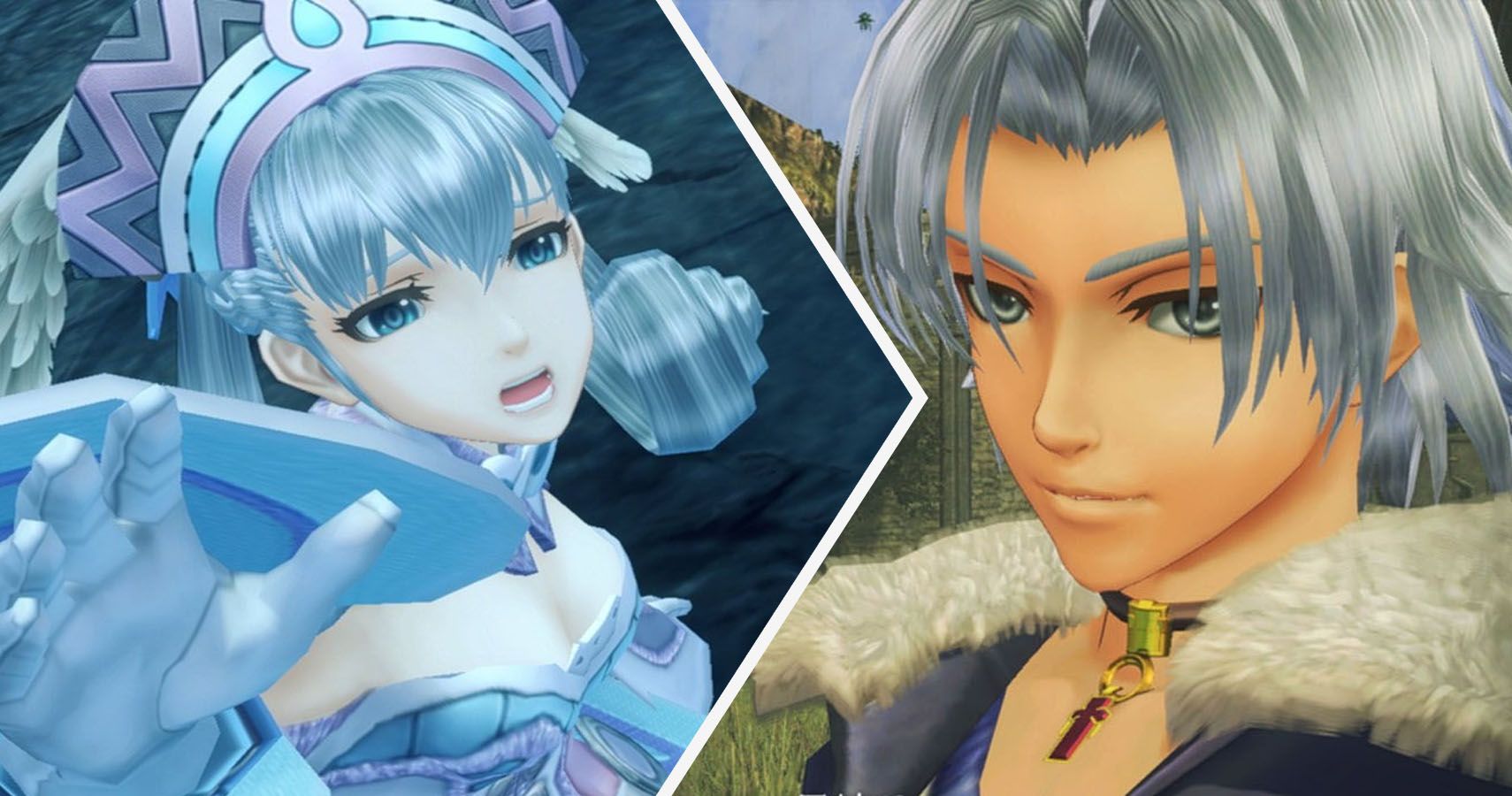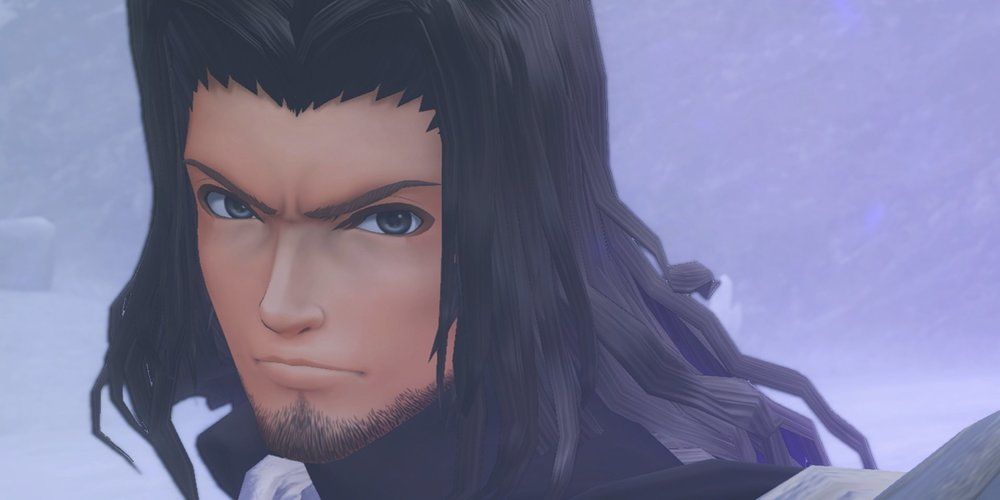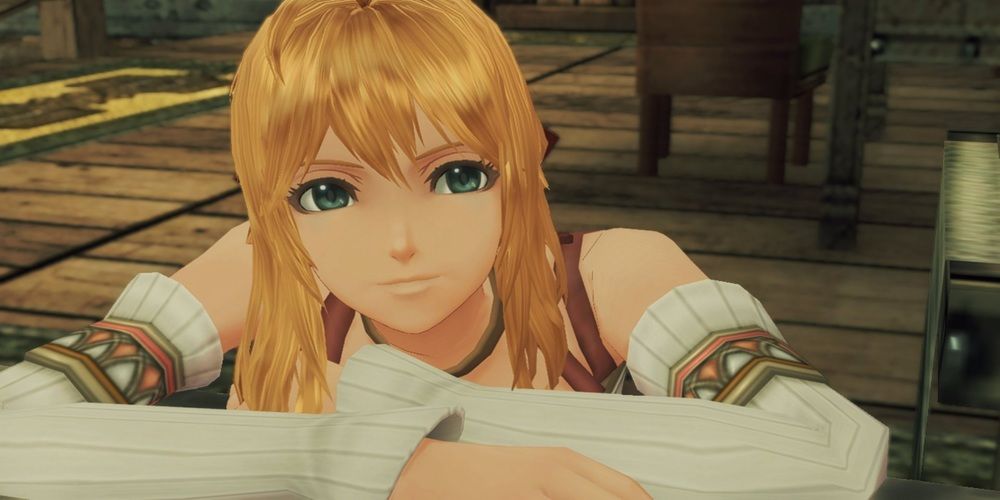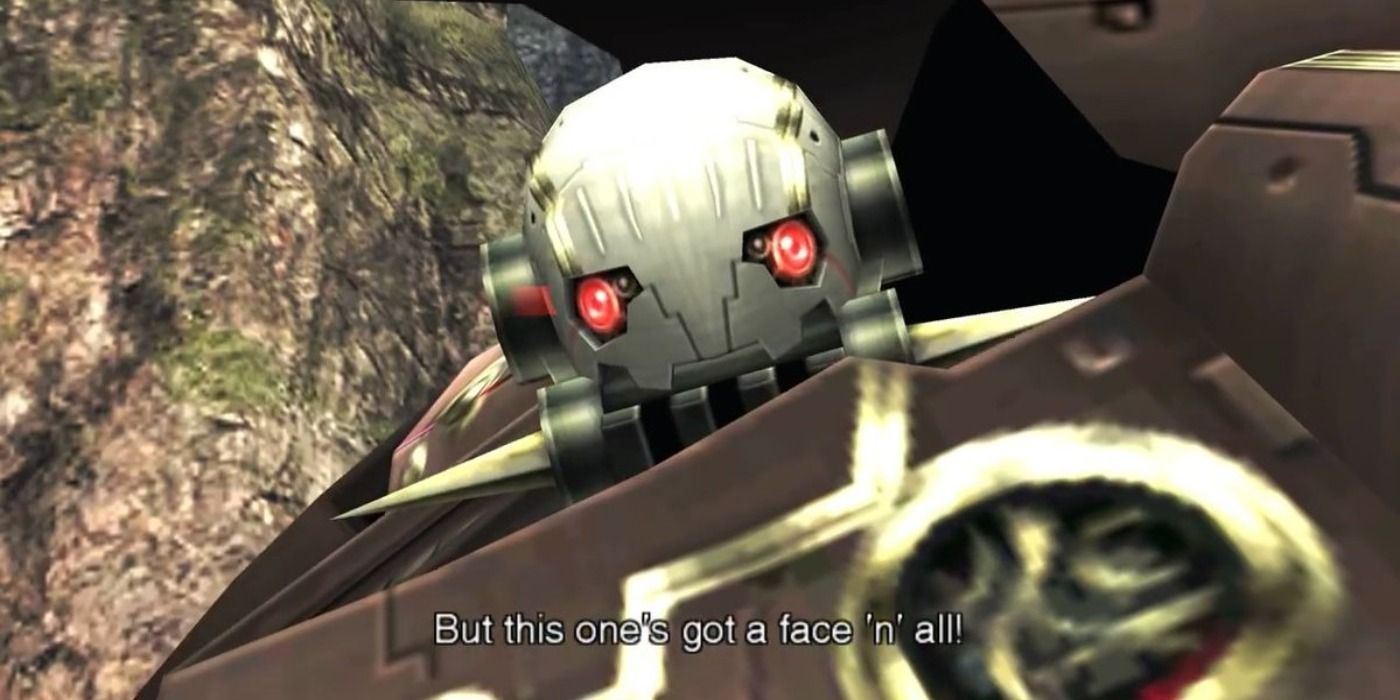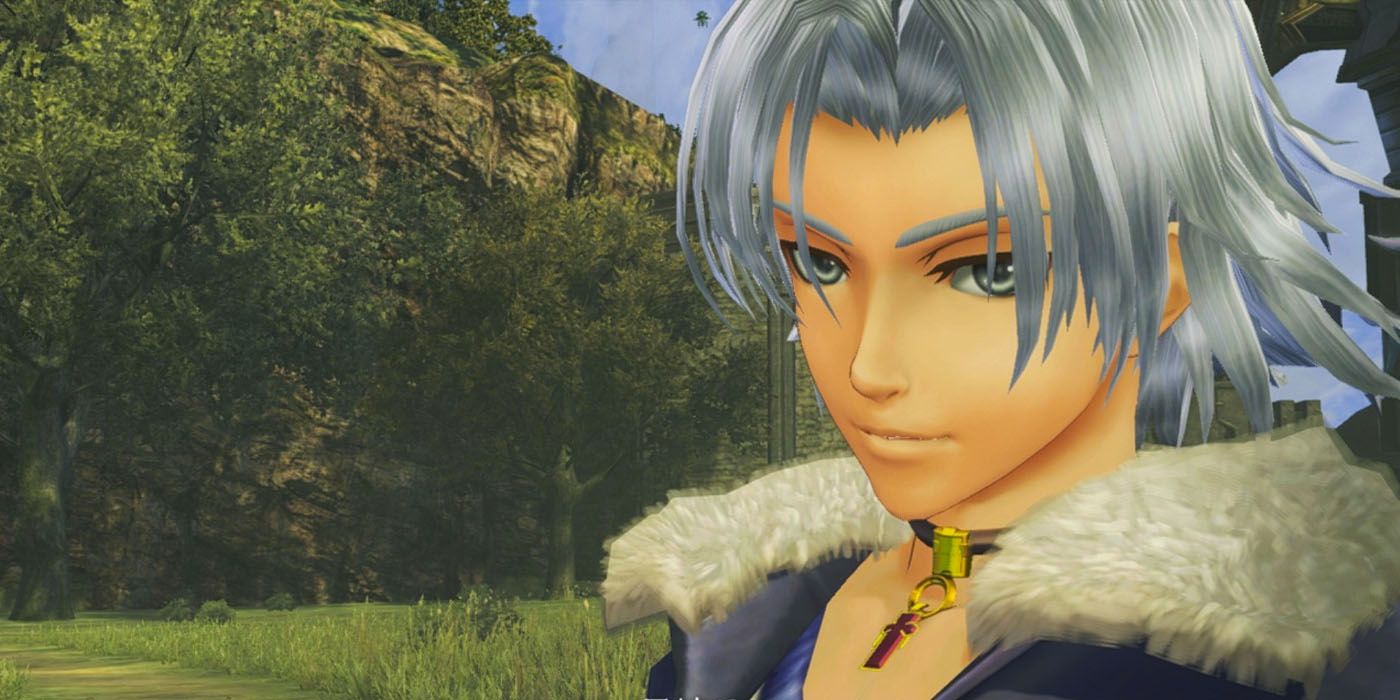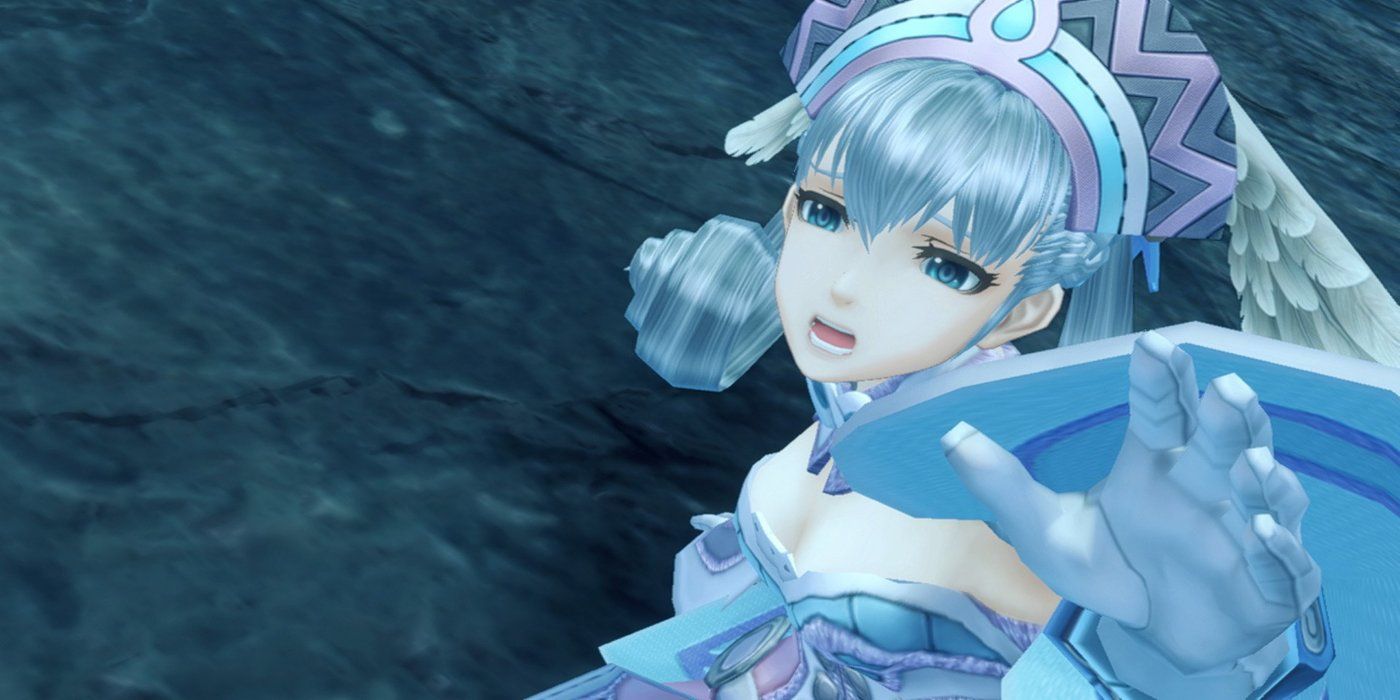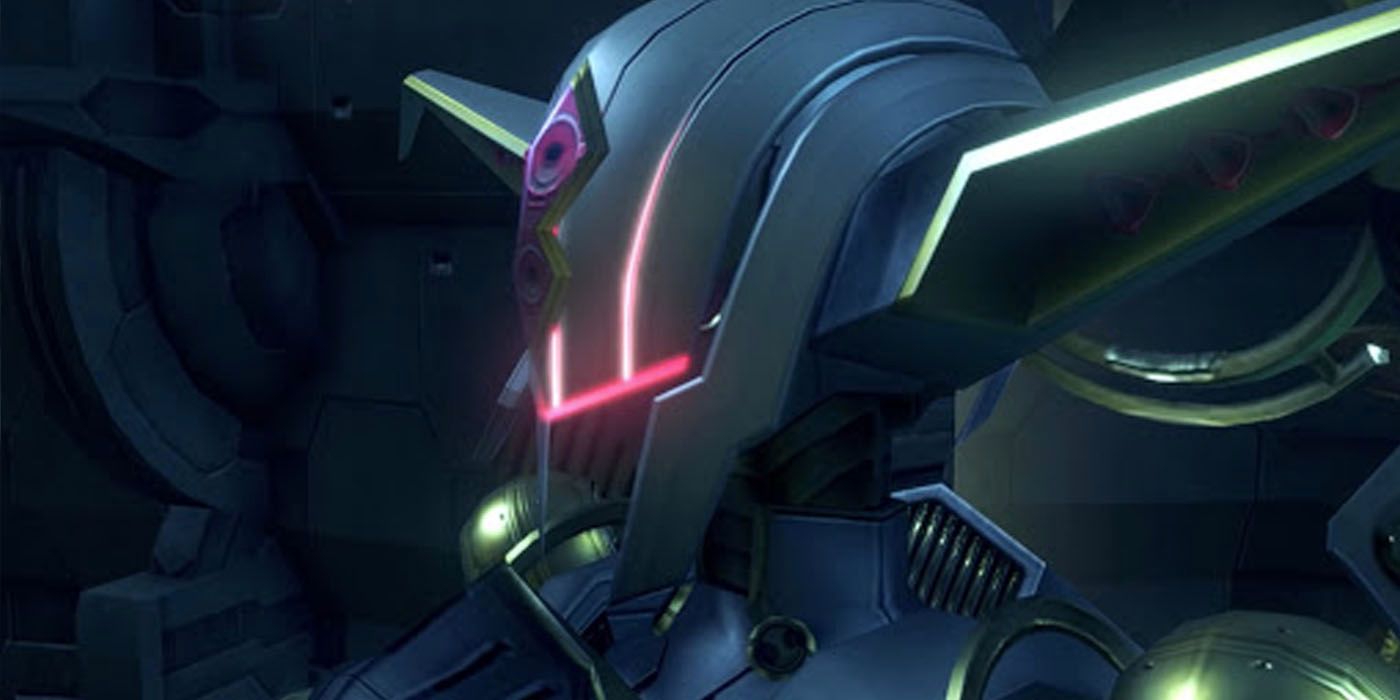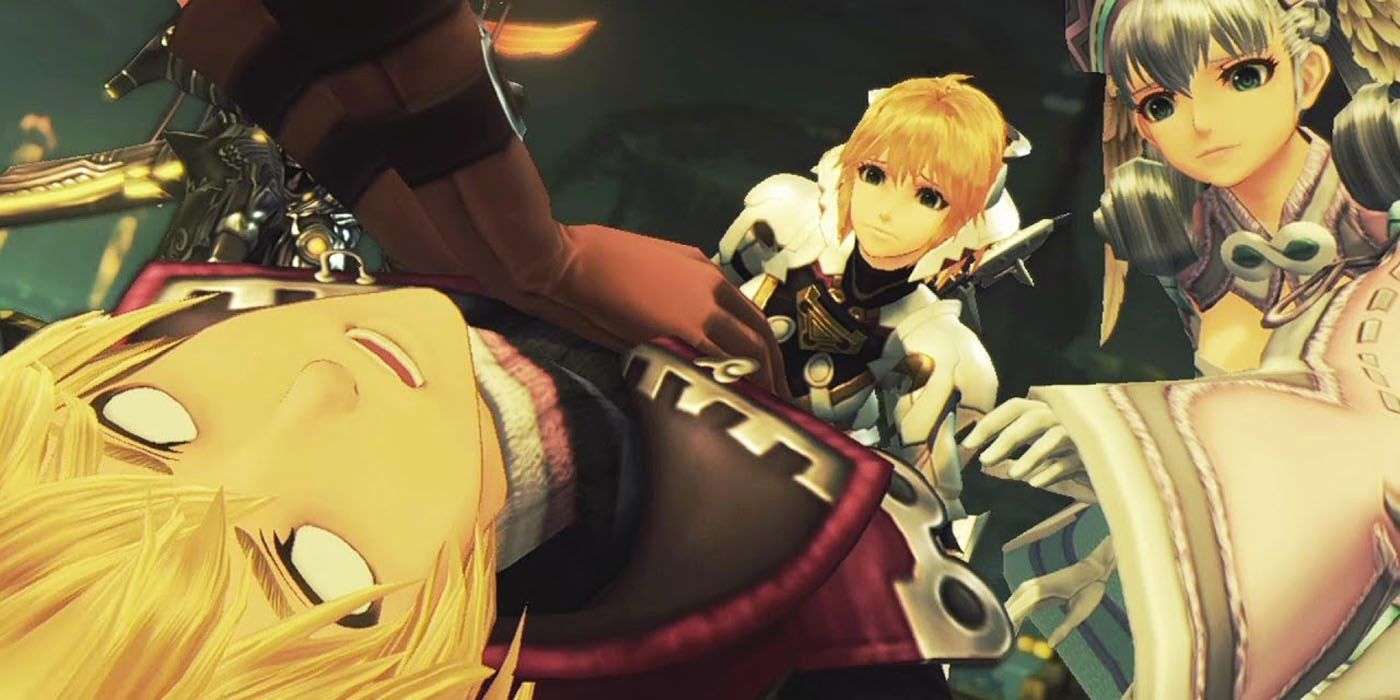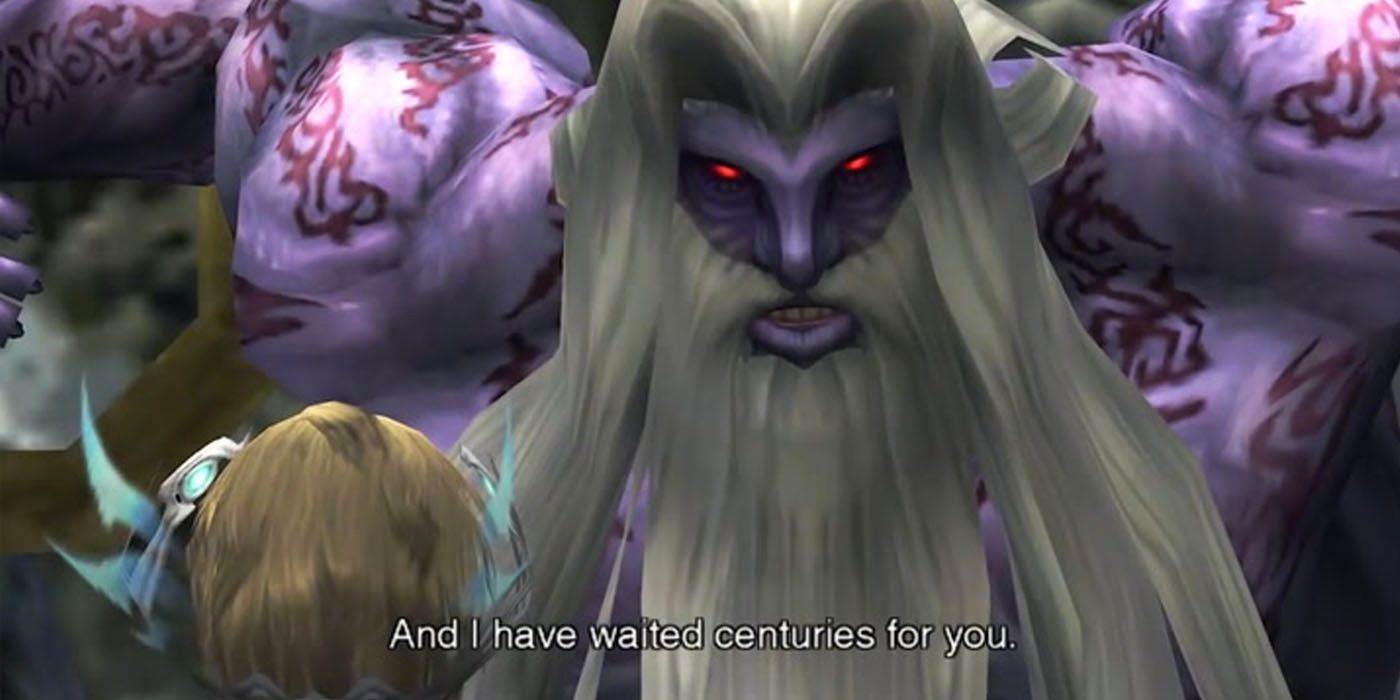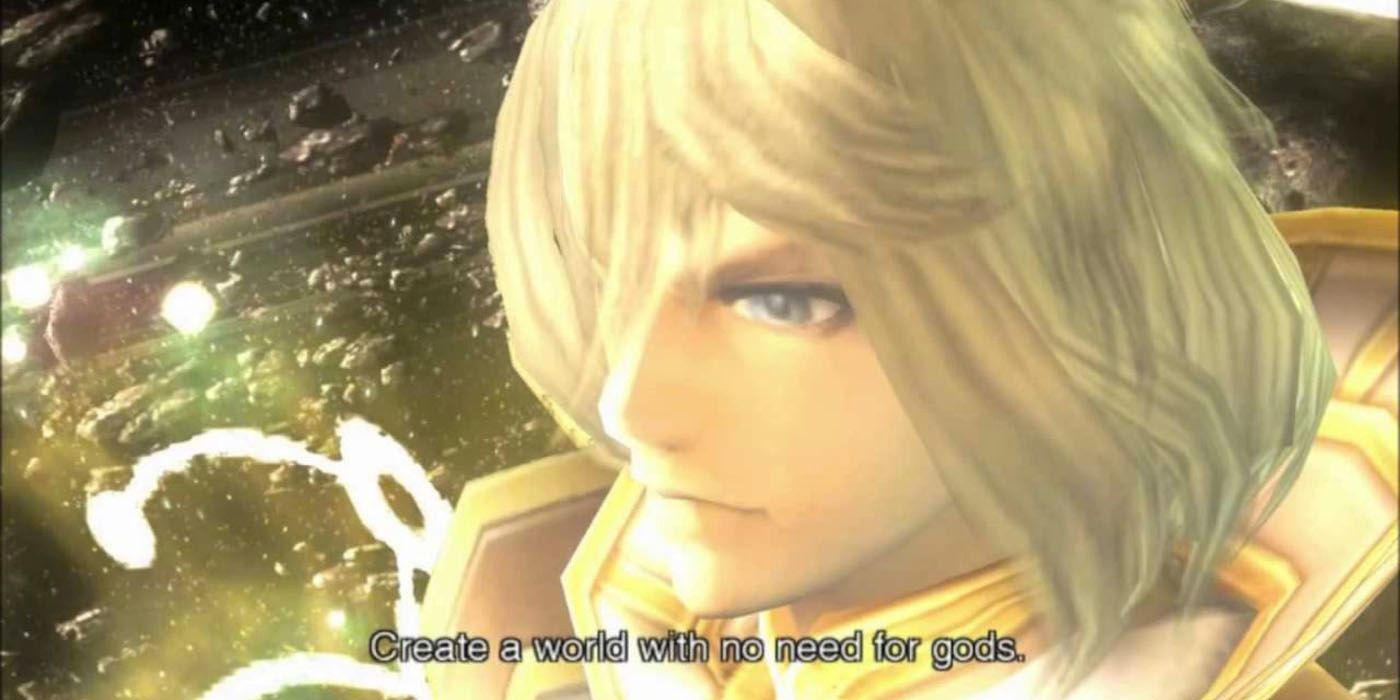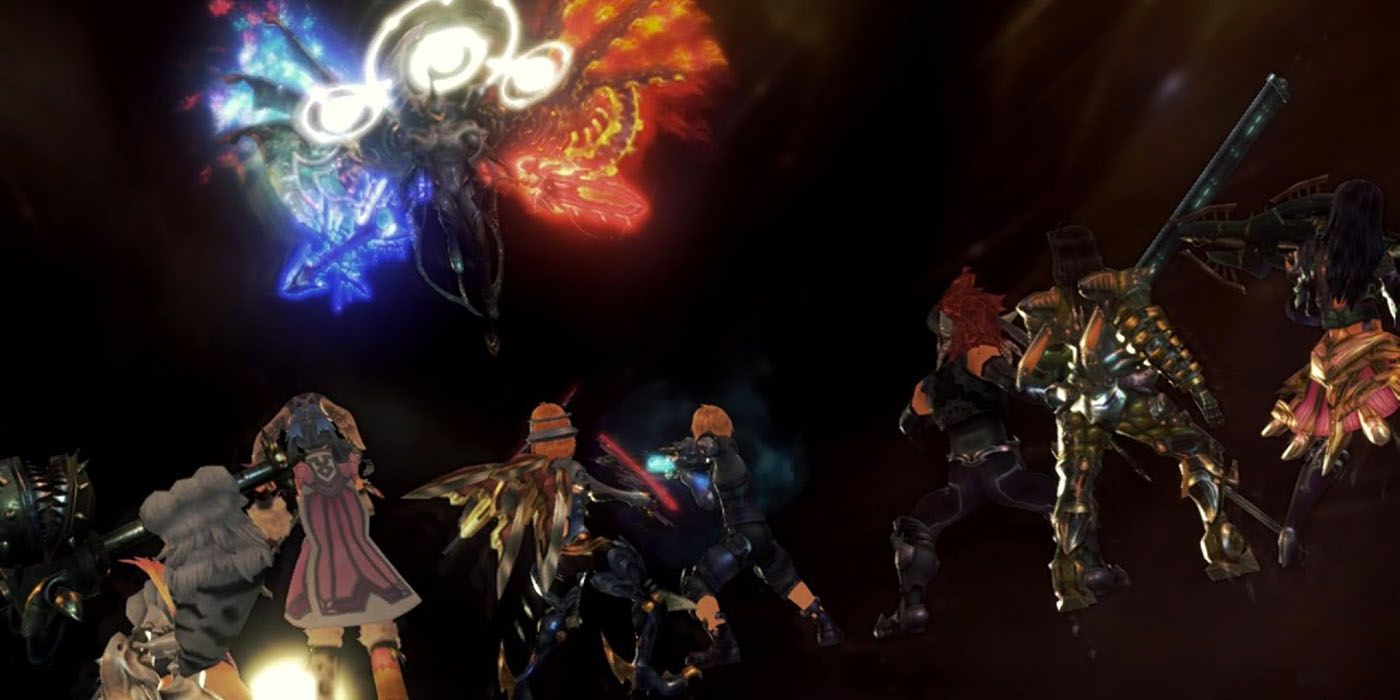Video game stories are often dismissed as inherently lesser to the narratives found in literature or cinema, but this is a notion that sells the medium short and ignores the host of talented writers that have been giving the industry depth for decades. Xenoblades Chronicles was recently remade for the Nintendo Switch, giving audiences a chance to appreciate one of gaming’s greatest stories.
Tetsuya Takahashi’s greater Xeno- franchise has earned well praise for their stories (Xenogears in particular,) but the first Xenoblade Chronicles might very well be Takahashi’s finest work. Xenoblade begins as a typical revenge story before snowballing into a deep look at man’s place in this universe, complete with twist after twist.
10 Dunban Isn’t The Main Character
Shulk’s narration of the world’s creation story followed by Dunban taking up arms against a legion of Mechon makes for an incredible finale. In just a few minutes, audiences understand both where this world is rooted in and the conflict that consumes both Bionis & Mechonis. It’s a classic opening for what appears to be a classic RPG.
Dunban is set up as a traditional hero, delivering suave line after line– the kind audiences instinctively want out of their protagonist. But this is only for the prologue, and main control shifts over to Shulk– along with the revelation that the Monado has crippled Dunban’s arm. While Dunban isn’t the main character, he’s still an extremely important character.
9 Fiora Dies
Following the prologue, Xenoblade Chronicles dedicates some time in establishing Shulk, Reyn, and Fiora as the core three party members. Their personalities play off each other well, Shulk & Fiora have a budding romance that’s actually written with tact, and Fiora even has her own section where she’s the only playable character.
When the Mechon attack Colony 7, all signs indicate Shulk, Reyn, & Fiora will work in tandem to fight them off before embarking on their journey. Only Fiora ends up dying while trying to save Shulk. Even with the benefit of his visions, Shulk can’t save Fiora and is forced to watch her die twice.
8 Face Mechon Can Speak
Although the Mechon are clearly planning coordinated attacks against Bionis, the first few encounters with Face Mechon strongly suggest that Mechon can’t speak. Which is not to say they can’t communicate with one another– they very obviously can– but there’s no real cultural overlap between Homs and Mechon.
Until they speak. Xord opening his mouth for the first time is one of Xenoblade’s most chilling moments. Mechon aren’t just waiting around to be attacked, and they’re far more sentient than Shulk could have ever imagined. That said, the Mechon sharing a common language with Homs is actually evidenced by Egil– but it makes sense why Shulk & co. wouldn’t be privy to this information.
7 Alvis Can Wield The Monado
The first hour or so of Xenoblade spends quite a bit of time in ensuring players understand how exactly the Monado works and its history. Dunban was its original wielder, but it crippled his sword arm in the process; the Monado can’t be used by just anyone, as evidenced by Reyn losing control; the Monado can’t hurt Homs, seen when it bounces off Fiora; and Shulk is the only person who can use the Monado without any of the strain.
Naturally, Alvis taking the Monado from Shulk’s hand is something of a surprise, but him using both future sight and unlocking a new Monado Art like it’s nothing shatters everything players were taught about the blade.
6 Melia Is Royalty
Xenoblade Chronicles manages to juggle layered character development with a story that only grows in thematic scope as it goes on, but it does have a few awkward moments. Notably, the game treats the revelation that Melia is royalty as, well, a revelation. It can be argued that this revelation only exists for the characters, not the player, but that’s not how the arrival at Alcamoth is framed.
Melia being the Emperor’s daughter is meant to be a surprise, and while that specific detail might not be obvious, the fact she has a posh accent, was introduced with two consorts protecting her, and wears a headdress she can’t unequip immediately raises some flags.
5 Fiora Is Alive
It’s quite clever in hindsight how Xenoblade Chronicles hints at Fiora’s revival. Blonde hair on a woman’s body being placed into a Mechon just screams “It’s Fiora,” but then she’s referred to as “Lady Meyneth” and speaks with a completely different candor. Then it turns out this is Fiora, but now part-Mechon and the host body of Lady Meyneth’s spirit.
Fiora ultimately becomes the party’s seventh and final party member, but her arc is anything but pleasant. Not only has she lost a piece of herself (literally and figuratively,) Fiora is used as a pawn in Lady Meyneth’s game with Zanza. At least she gets her body back.
4 Shulk Dies
More than half of Xenoblade Chronicles positions itself as a fairly typical (albeit extremely well told and nuanced) revenge story. Shulk’s pure hatred of the Mechon is broken down as he recognizes their agency and signs of humanity, building himself up as the unifier between Bionis & Mechonis– and then he dies.
Shulk’s death leads to Zanza’s awakening, and the revelation that Shulk was nothing but a puppet. Whatever agency he has was ultimately being guided by a greater power. Shulk’s death is Xenoblade’s narrative turning point, and while he does come back to life, his death has a real effect on his character.
3 Zanza Is The Real Villain
Zanza ending up Xenoblade’s main villain is a plot twist that’s telegraphed before he even shows up. For what it’s worth, Zanza has enough charisma where his introduction actually does blur the line a bit– especially while players are still trying to figure out Alvis’ allegiances– but a chained giant on “Prison Island” is a bit on the nose.
At the same time, that’s not the full scope of the twist. Zanza isn’t just the real villain, he’s ostensibly God. Zanza taking on the role of antagonist for the rest of the story puts into perspective that the conflict between Bionis and Mechonis was always rooted in something much deeper.
2 The Creation Story
The Xeno- franchise on a whole makes great use of Abrahamic subtext and imagery. While not unusual for Japanese developers, it’s worth noting how titles like Xenogears and Xenoblade actually use these elements consciously, commenting both on the nature of religion and how it influences man for better or worse (typically worse.)
Zanza, actually a human named Klaus, triggered a world ending cataclysm which wiped out the planet Earth and rebuilt it into Bionis & Mechonis. Klaus ostensibly creates the world in his image much in the way Creator Figures often create man in theirs. It’s an interesting reinterpretation of the traditional creation story.
1 A World With No Need For Gods
Man against God is only one of a few narrative conflicts that every story can be boiled down to, and it’s a structure the JRPG genre makes frequent use of– especially the Xeno franchise. Unlike other series in the medium, however, Xeno- often tackles themes of religious subservience and spiritual identity with a tact even literature often lacks.
Shulk creating a world without the need for gods (or in this case, a singular God) is by no means novel, but the execution is notable as Shulk has to reason between becoming God to create the world or recreating the world without God. Defined by his defiance of fate the entire game, Shulk chooses to recreate the world in no one’s image.

